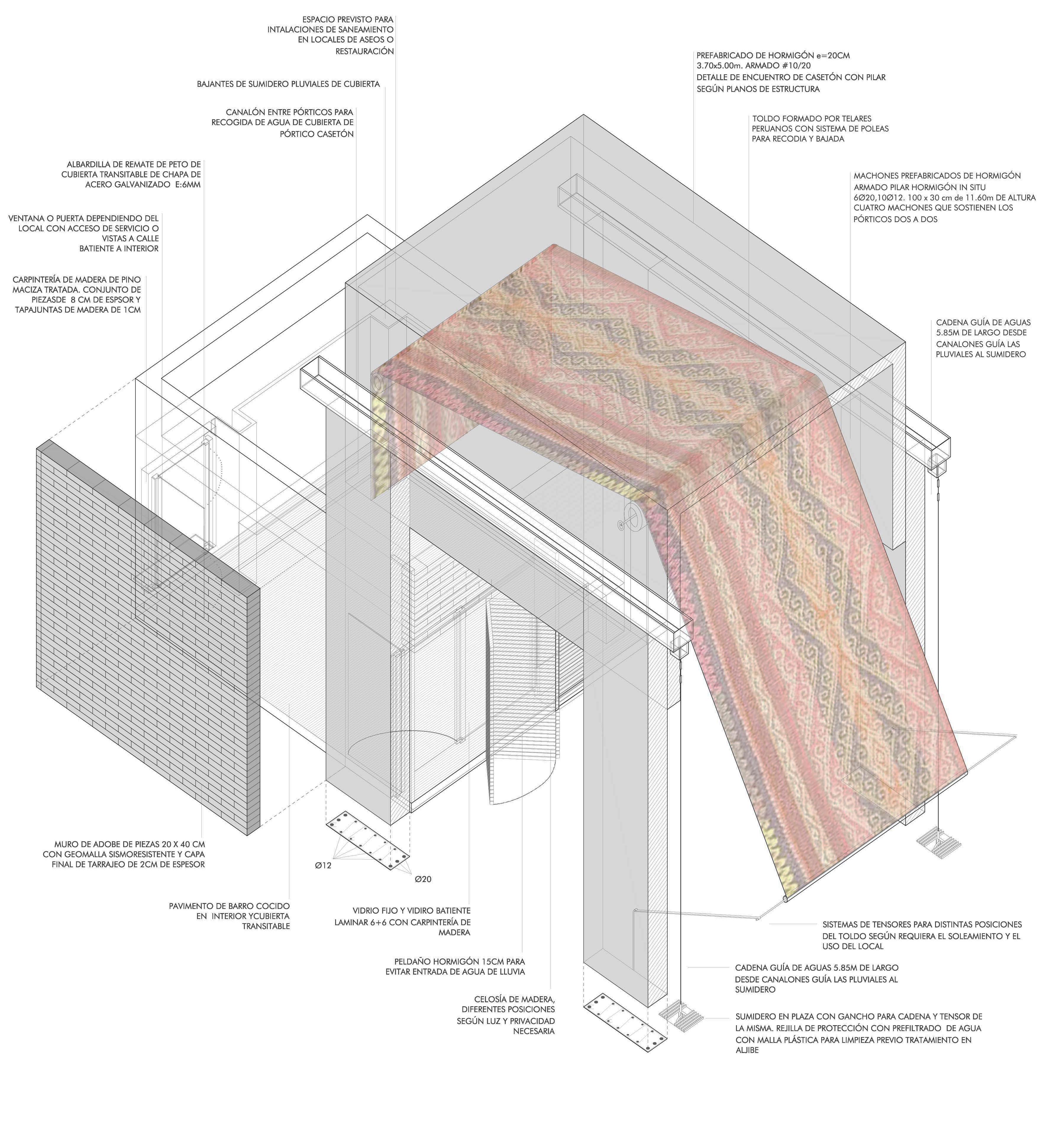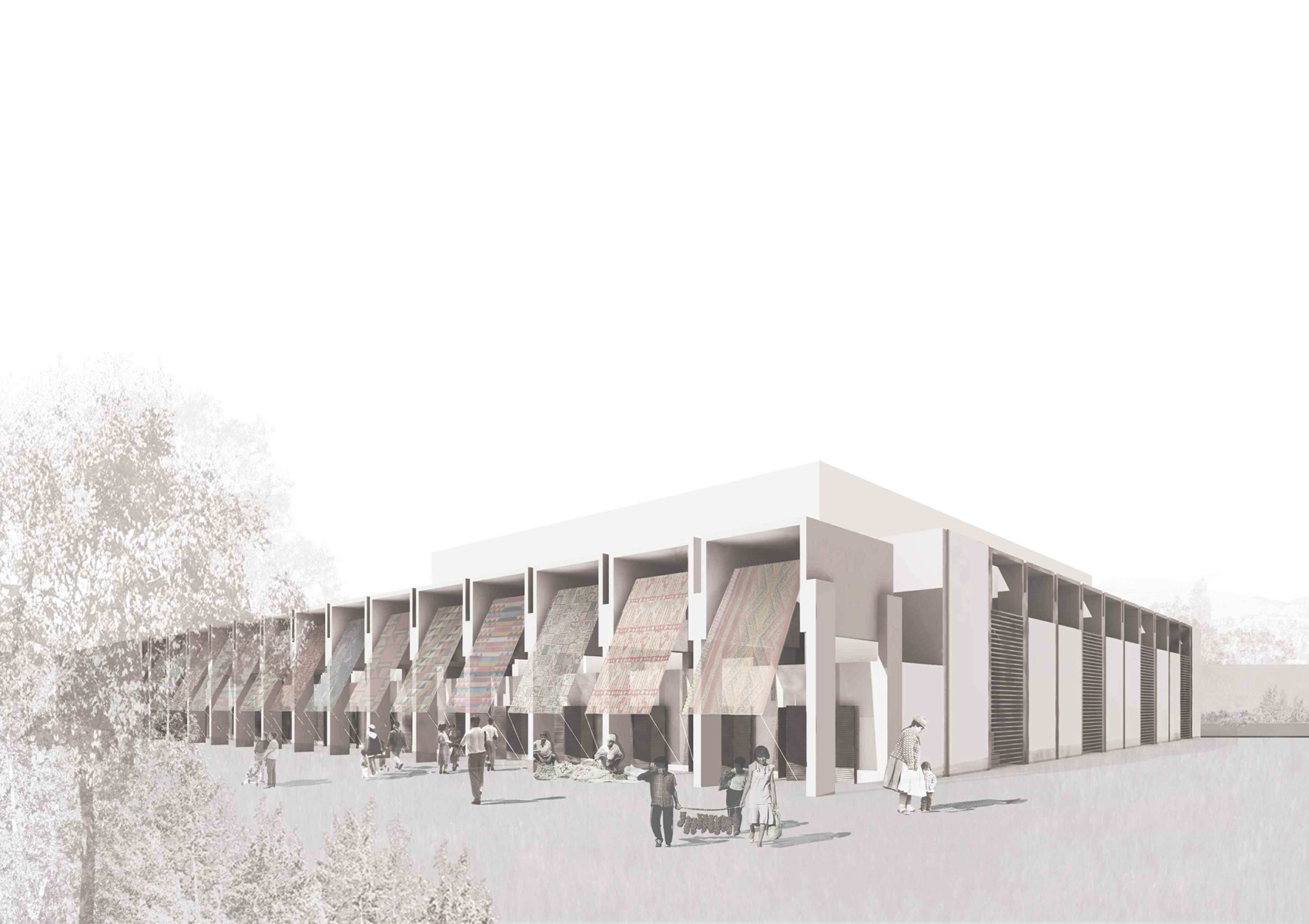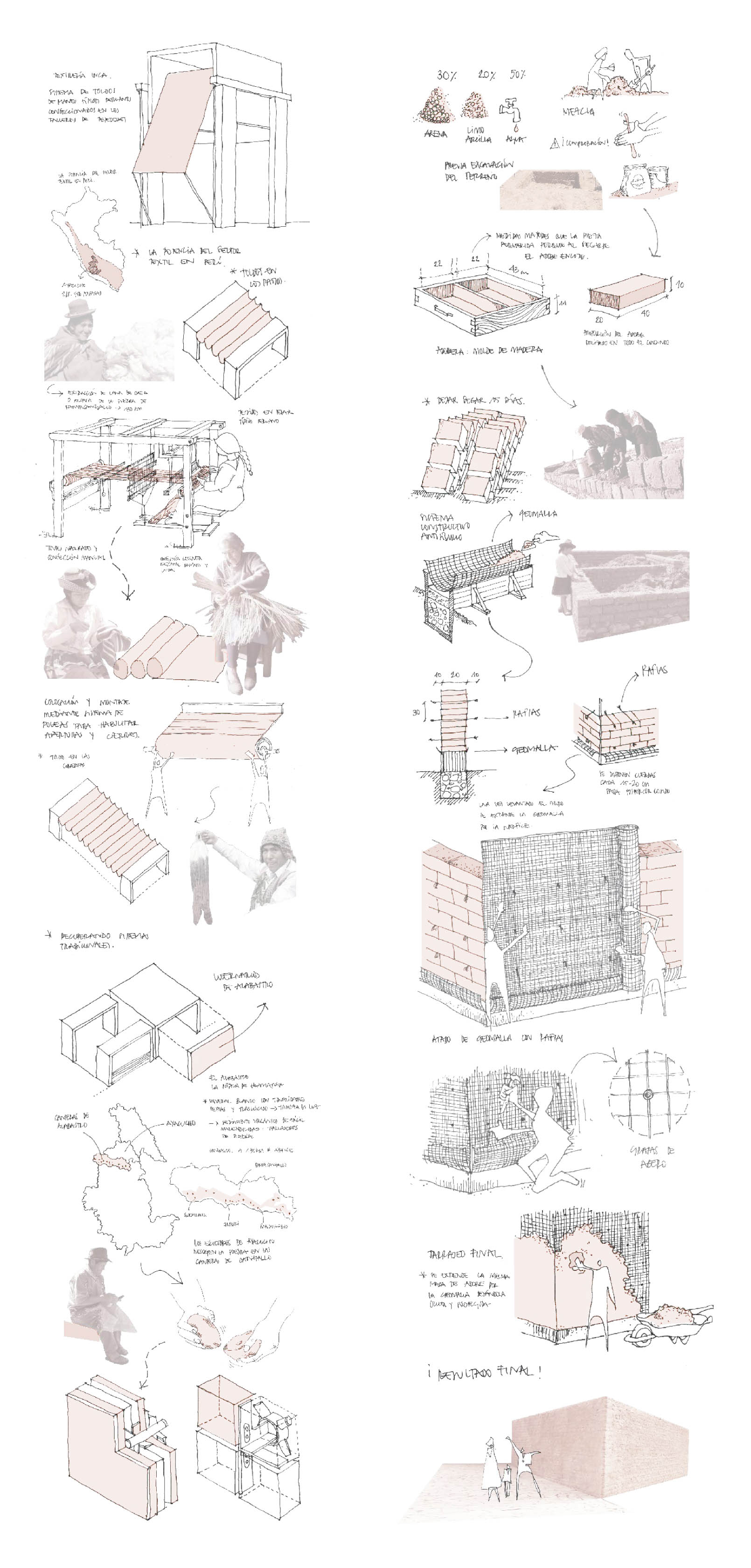Thesis Project
¡Kusi Ayllu!
¡Kusi Ayllu!

¡Kusi Ayllu! Youth development Centre Urban
-Revitalization and
infrastructure-
During my time living
in Peru, I participated as volunteers in Ayacucho. I was part of a small team schooling 80 children
and providing full time care for them at their home. This
Thesis Project is a complete investigation of a real social
problem in the Orphanage we lived in and its city. During this time, my interest in environmental and sustainable cities increased greatly and I had
the opportunity to develop an urban manifesto for sustainable
development and construction systems, in these remote regions of
Peru.
![]()

"An important social problem is approached with an architecture that looks connected with the place and the local know-how solutions. The project seeks to take into account several factors, from social responsibility to adapting traditional building systems. The end result is a sensitive and elegantly simple structure."
The Jury Members of The IE Architecture+ Prize.
First Prize National Competition of Young Talents.
#Ayacucho
Going into the mountains in the Inca’s Country, nestled in the heart of the Peruvian Andes, we arrived to Ayacucho: one of the The Poverty Triangle’s vertices in South America. Traditionally a place hit by violence, its name in the Quechua language means Dead’s corner.

#PeruvianUrbanGrowth
The great urban expansion during the last ten years has been characterized by disorder, environmental impact, agglomeration and urban risk. Nowadays, the town center is not able to absorb this growth. There is a lack of public spaces with the Plaza de Armas as the single lung of the city. The new surrounding neighborhoods also claim their own identity, diversity, independence and order.
#KusiAylluImpact
The aim of the project therefore was to diversify and activate the Orphanage area, giving order and connections. Public spaces and an improved urban infrastructure with a water balance scheme was the first key step. Urban infrastructure and provisions for future expandability will also be created in order to join the Urban facilities for Ayacucho people.


#1:2.000-1:100 The Orphanage Scale. The social problem and why I decided to do a Youth Development Center
#PeruvianChilhoodAndYouth
It is not possible to address the issue of children and youth in Ayacucho without taking into account the damage caused by Sendero Luminoso. It is not surprising that all the violence has left a legacy of traumatic situations, extreme poverty and a high rate of orphanhood. Many of them are still suffering the structural violence and investing in education solutions, is one of the most effective ways to prevent falling into self-destructive younger circles.
#PuericultorioJAVA
The Orphanage JAVA Puericultorio was founded in order to provide comprehensive support for every child orphaned victim of violence. It is located in the outskirts of the city, where almost a hundred children are going through the school system up to the age of 18. Once they come of age, they don’t have any further support and, therefore, no one to look after them. The transition from the lives of children to adult life is really difficult. Puericultorio was in need of somewhere for kids to move this step forward, so they become self-sufficient and independent.
#1:100-1:1 The Building scale. The construction. Traditional constructions systems
#Integration
This is how the Kusi Ayllu Youth Development Center was born: the Integration of the orphanage within the existing urban layout and its development over time. An urban scale project which gives the city new public spaces, complement the teaching vocation and diversifies the activity of San Juan suburb.






#Commitment
Young people´s learning and mayurity progress is shown in the commitment to their city. Thus, new trades take to the streets, giving to the city the missing commercial network. This is how, through this thread, they have created a walkable area reminiscent of the arcades of the Plaza de Armas that unify the whole ensemble.
Kusi Ayllu becomes the responsibility of young people and neighbors to fulfill the needs of the area.

#Flexibility
The gaps that have been generated, recover public space that demands the city, a phased transition of three stages. The pinewood park disordered nature as liberating, crops with treated vegetation and finally the square, completely geometrized.

#Autonomy
The square, as the area’s lung, becomes the center of San Juan activity. Conceived as a provisioning space, where three levels are considered:
-At a street level, the famous square with the arquibanco piece as a touchstone for the activities.
-At a lower level, the parking area and the servicesinfrastructure.
-Finally, a cistern as the solution to the climate problems. Flood protection and supply in times of drought.

#Innovation
The construction system draws on a traditional Peruvian system, integrating it into a proposal of modern construction.
Under a strict modular grid, the concrete structure is interspersed with walls of adobe seen. The seismic system is designed entirely from community participation and the intention to preserve the technical local building traditions.
#Sustainability
The life cycle of the proposed project goes beyond mere technical constructive.
Self-project efficiency is the key to its operation as a program, its evolution over time and economic self-sustainability.


www.carvajalcarmela.com
